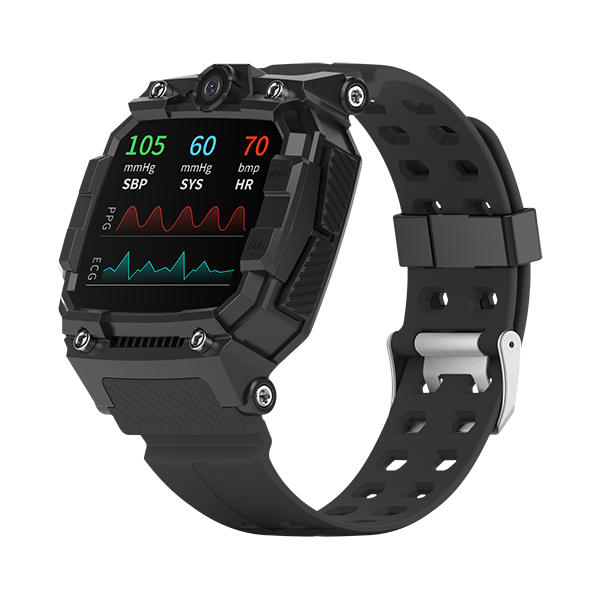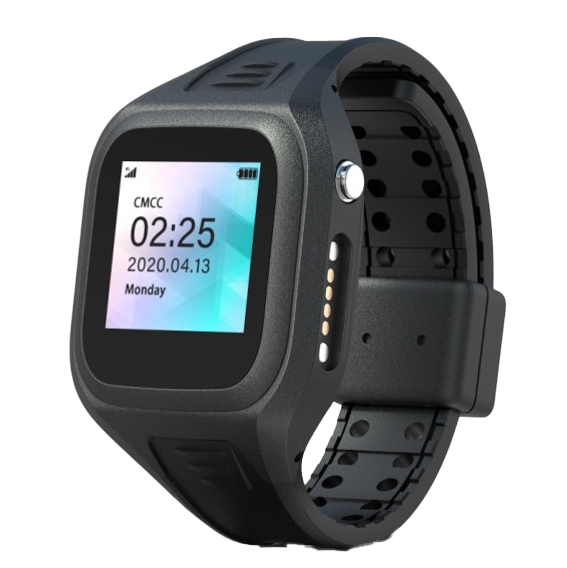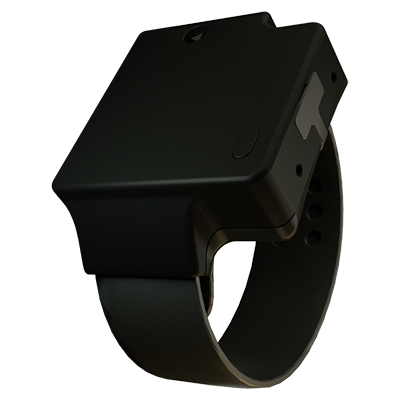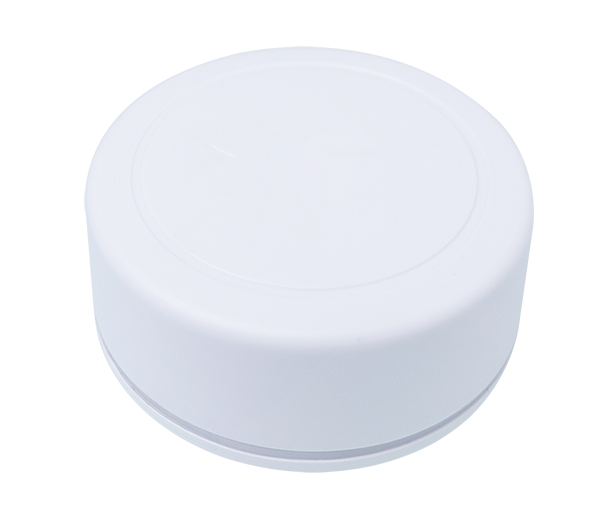Frequently Asked Questions and Responses (Software)
Do I have to use ThinkRace software to purchase ThinkRace products?
ThinkRace, as a manufacturer of smart wearable products, does not require customers to use our proprietary software solutions. We understand that customers may need to integrate our devices into their existing third-party software platforms, and we provide various options to accommodate this need.
For customers purchasing samples, ThinkRace offers free software services so they can test the products or conduct proof of concept (PoC). The free software service period typically lasts for six months. If customers need a longer duration of free service, they can contact our sales consultants for negotiation. After the free period, we will charge a software service fee of $10 per unit per year. For customers ordering more than 500 units, we recommend a private software deployment approach, which usually provides a more cost-effective solution.
Additionally, all of our smart wearable products support FOTA (Firmware Over The Air) functionality, which means that the products can receive updates and improvements through online upgrades. If customers have specific customization requirements, they can obtain these updates through the online upgrade process.
Please note that the specific terms and conditions of the software services may vary based on the customer’s specific situation and needs. Therefore, we recommend contacting our sales team directly to obtain the most accurate information and tailored service solutions.

What features does ThinkRace software provide?
ThinkRace’s software platform offers comprehensive monitoring and management capabilities, primarily divided into a web platform, mobile app, mobile browser login, and a unique WeChat mini program for China. This software is a SaaS (Software as a Service) platform that serves multiple companies, allowing each user to create multiple subsidiaries and sub-accounts to manage their smart wearable devices and care recipients. Below are the main features of the software platform:
- Real-time Monitoring: Track the location of smart wearable devices in real time to ensure the safety of the individuals.
- Historical play: View the movement history of the devices and analyze the activity paths.
- Geofencing: Set virtual geographical boundaries, and the system will trigger an alert if the device leaves or enters a specified area.
- Indoor Positioning: Utilize technologies such as Beacon for precise indoor location tracking.
- Attendance Management: Record employee clock-in and clock-out times and manage attendance status.
- Device Configuration: Remotely configure parameters of smart wearable devices, such as volume and screen brightness.
- Information Push: Send text, voice, and image messages to smart wearable devices.
- Alarm Monitoring: Monitor the device’s status, such as low battery or offline status, and issue alerts in case of abnormalities.
- Health Monitoring: Track health indicators such as heart rate, blood pressure, and sleep patterns.
- Data Export: Export monitoring data into reports for easier analysis and management.
Additionally, ThinkRace’s software platform integrates an AI module that enables the system to send various types of push notifications, including text, voice, and images, enhancing the level of intelligence in the system. The platform’s AI capabilities can automatically convert push notifications into the wearer’s preferred language, allowing for personalized information delivery.
For more detailed features, please consult our sales representatives to obtain the software user manual.
What programming language is used for ThinkRace software? Can you describe the system architecture?
ThinkRace’s software platform is developed on the Node.js framework and can run on both Linux and Windows systems. The development language used is TypeScript, which is a superset of JavaScript that adds type definitions and features for class-based object-oriented programming, enhancing maintainability and scalability when developing large applications.
In terms of software system architecture, ThinkRace’s software is a SaaS (Software as a Service) platform with high scalability, capable of accommodating thousands of companies simultaneously. The platform can manage over a million smart wearable devices and is designed as a distributed electronic monitoring system. It supports the integration of various devices, including rugged smartwatches, electronic handcuffs, electronic ankle monitors, Bluetooth beacons, and millimeter-wave radar sleep and activity monitors. The web system is operating system-independent, running on both Windows and Linux systems, and utilizes open-source databases such as MySQL and Redis.
Additionally, ThinkRace’s software platform offers a comprehensive set of API interfaces, allowing customers to access all functionalities within the web system via API, including real-time positioning, historical tracking, geofencing, indoor positioning, information push, data management, health reports, sleep and activity reports, and alarm reports. If customers require specific data combinations not currently available through the existing APIs, ThinkRace can also customize API development to meet special integration needs.
Is ThinkRace software free?
ThinkRace offers free software services to customers purchasing samples, allowing them to test the products or conduct proof of concept (PoC). The free software service period typically lasts for six months. If customers need a longer duration of free service, they can negotiate with a sales consultant. After the free period, the software service fee is $10 per unit per year. For customers ordering more than 500 units, ThinkRace recommends a private software deployment approach, which is more cost-effective.
ThinkRace’s software platform is a SaaS (Software as a Service) platform that can accommodate thousands of companies simultaneously, allowing each user to create multiple subsidiaries and sub-accounts to manage their smart wearable devices and care recipients. The main features of the software include real-time monitoring, historical tracking, geofencing, indoor positioning, attendance management, device configuration, information push, alarm monitoring, health monitoring, and data export.
My project requires using ThinkRace software; how many types of licenses are available?
ThinkRace offers three different software license options to meet the needs of various project stages and scales:
Shared SaaS Platform: This is an entry-level option where customers can open an account on ThinkRace’s existing SaaS platform and create a standalone login interface with their company logo and a separate domain name. This option is suitable for customers with a smaller number of devices or those in the proof of concept (PoC) stage, with relatively low costs.
Leasing Dedicated Space Deployment: While still using ThinkRace’s servers, this option differs from the shared SaaS platform by employing dedicated server space and databases, allowing for a standalone login interface with the company logo and a separate domain name. It is suitable for managing a certain number of wearable products and has already provided services to customers but plans to privatize deployment in the future.
Private Cloud Deployment: Customers own their own servers and have a technical team to manage them. The ThinkRace team will remotely assist customers in deploying the software onto their own servers. This option is suitable for managing a large number of wearable products, typically over 1,000 units, or for projects with high data management requirements. Another advantage of private deployment is a one-time fee, avoiding annual charges based on the number of devices, thus saving significant software usage costs.
Additionally, ThinkRace offers SDK and Open API services, allowing customers to conduct secondary development and integrate data into their own platforms, along with providing corresponding technical support.
My project requires a separate deployment of ThinkRace software; what are the server configuration requirements?
For the standalone deployment of ThinkRace’s electronic monitoring software, the server configuration requirements will vary based on the number of managed smart wearable devices. For example, to support 3,000 devices, the recommended server configuration is as follows:
– CPU: 8-core CPU with a clock speed of at least 2.5 GHz.
– Memory: At least 32GB.
– Storage: SSD with a capacity of no less than 500GB, with IOPS (Input/Output Operations Per Second) of at least 5000.
– Bandwidth: Minimum of 5Mbps.
– Operating System: Recommended to use Linux Ubuntu 20+, although the software can also run on Windows systems.
– Other Software: Node.js, PM2, Nginx, MySQL, MongoDB, Redis.
The installation and debugging time typically ranges from 3 to 5 days. If the number of devices increases, additional server resources may be required or a distributed deployment may be necessary. For larger-scale deployments, higher-performance servers or a multi-server architecture may be needed to enhance concurrent connection capacity while ensuring data backup, disaster recovery, and quick fault recovery.
For professional customers managing a large number of online devices, it is common to deploy three or more servers to run the Traxbean platform. This deployment method can handle 3 to 5 times the number of concurrent connections compared to a single server. If there is a need to manage a significantly higher number of simultaneous online devices, a load balancer may be required to distribute the massive data throughput across multiple servers, supporting high concurrency processing capabilities.
For more detailed information, you can visit ThinkRace’s official website to obtain the server configuration requirements and a detailed introduction to the system architecture.
My project needs to manage 10,000 smartwatches; what are the server configuration requirements?
My project is a government project that requires the software to be open source; can ThinkRace provide this?
For projects requiring the management of 10,000 smartwatches, it is recommended to deploy 2-3 servers. The recommended configuration for each server is as follows:
- CPU: 8-core CPU with a clock speed of at least 2.5 GHz, to ensure sufficient processing power for managing data from a large number of devices.
- Memory: At least 32GB of RAM to support a large number of concurrent connections and data processing requirements.
- Storage: SSD with a recommended capacity of 500GB or larger to provide sufficient storage space while ensuring fast data read and write speeds.
- Bandwidth: A minimum of 5Mbps bandwidth to ensure efficient data transmission and avoid network bottlenecks.
- Operating System: It is recommended to use Linux Ubuntu 20+ or another suitable Linux distribution to ensure system stability and performance.
Considering the high availability and disaster recovery requirements of the system, it is recommended to deploy at least two servers: one as the primary server and the other as a backup server to enable failover and data redundancy. If budget and resources permit, deploying three servers can further enhance the system’s processing capacity and reliability.
Installation and debugging typically take 3-5 days, depending on the server configuration, network environment, and the experience and efficiency of the implementation team. During the deployment process, it is also important to consider database optimization, data backup and recovery strategies, as well as system security and maintenance tasks.
ThinkRace holds all intellectual property rights for the software and can provide the source code when your project requires government or carrier code review. However, providing the source code is not free, and specific costs should be consulted with your sales representative. In certain specific cases, such as regional projects where the required number of smart wearable devices exceeds 100,000 units and the project team has a professional software development team, ThinkRace will provide the software source code free of charge. In addition to the source code, we will also provide relevant technical documentation and technical support throughout the development process to ensure the smooth progress of the project.
Does ThinkRace software support APIs?
Yes, ThinkRace’s software supports RESTful API, allowing customers to access device data via the API and integrate it into their own software systems. By using the Open API, customers can perform all functions available in our web system, including but not limited to real-time positioning, historical tracking, geofencing, indoor positioning, information push, data management, health reports, sleep and activity reports, and alarm reports. All these operations can be conducted through the API to retrieve the necessary data.
Additionally, if a customer’s system requires specific data combinations not provided by the existing APIs, ThinkRace can offer customized API development to meet those special integration needs. This demonstrates ThinkRace’s commitment to providing flexible and scalable solutions, ensuring that customers can fully leverage ThinkRace’s systems and data for seamless integration and data sharing between systems.
How can I integrate ThinkRace products into my existing software?
To integrate ThinkRace’s products into your existing software, you can choose from the following methods:
- Communication Protocol Integration: ThinkRace’s smart wearable products can send data to your server via TCP protocol. You can run a TCP Socket Listener on your server to maintain communication with the devices. Our communication protocol documentation provides details on the data format for upstream data and downstream commands, allowing you to fully control the devices and obtain information such as location, heart rate, activity, battery level, signal, and status. If you need the communication protocol documentation, please contact your sales consultant.
- RESTful API Integration: If your development team is not familiar with TCP Socket programming, you can opt to integrate device data through RESTful API. The devices will still connect to ThinkRace’s servers, allowing your developers to quickly access device data via RESTful API calls and seamlessly integrate it into your system.
- SDK Integration: Using the SDK allows you to restructure the software of the smart wearable devices, accessing data directly from the device’s underlying system and sending the required data to your server based on project needs. With the SDK, you have complete control over data acquisition, algorithms, encryption methods, and transmission methods for the devices.
These integration methods can be chosen based on the specific needs of your project and the technical capabilities of your development team to ensure smooth connectivity with ThinkRace devices. For more detailed information and technical support, please visit ThinkRace’s official website or contact your sales consultant.
Does ThinkRace offer an SDK for its products?
Yes, ThinkRace provides an SDK (Software Development Kit) for smart wearable devices, which is developed based on the Android operating system and offers high flexibility. Customers can use the SDK for secondary development to redefine the user interface, add new features, customize communication protocols, implement secure encryption, and interact with the server. Through the SDK, customers can access device data such as data connections, GPS Beidou positioning, indoor beacon positioning, heart rate, body temperature, blood oxygen, and activity data. They can also utilize features like the camera. After completing the secondary development, ThinkRace can assist in merging the software with the underlying operating system to better support FOTA (Firmware Over-The-Air) functionality, enabling remote firmware upgrades.
What is the difference between SDK and API?
SDK and API are different methods of data integration. The SDK is an Android software package that runs on the operating system of the smart wearable device, allowing you to have comprehensive control over the device. Your engineers can perform secondary development on the smart wearable device, restructuring data acquisition, algorithms, encryption methods, and transmission methods.
On the other hand, the API is a RESTful API that runs on our servers. To access data via the API, the smart wearable devices must still be bound to our servers, enabling you to retrieve data through the RESTful API.
What operating system does ThinkRace's smartwatch run on, and what programming language is used for development through the SDK?
ThinkRace’s smartwatches and wearable devices run on the Android operating system, with different software versions available: Android 4.1 and Android 8.1. If you wish to perform secondary development on the smart wearable devices using the SDK, the development language is Java. We will provide the SDK along with reference code examples. For pricing information, please consult your sales representative.
Does ThinkRace's smartwatch support FOTA?
Yes, ThinkRace’s smartwatches support FOTA (Firmware Over-The-Air), allowing these devices to receive software updates when connected to the network. This enables us to introduce new features or address any issues that may arise with the smartwatches. The FOTA functionality is not mandatory; if customers have any concerns, they can choose to disable this feature.







